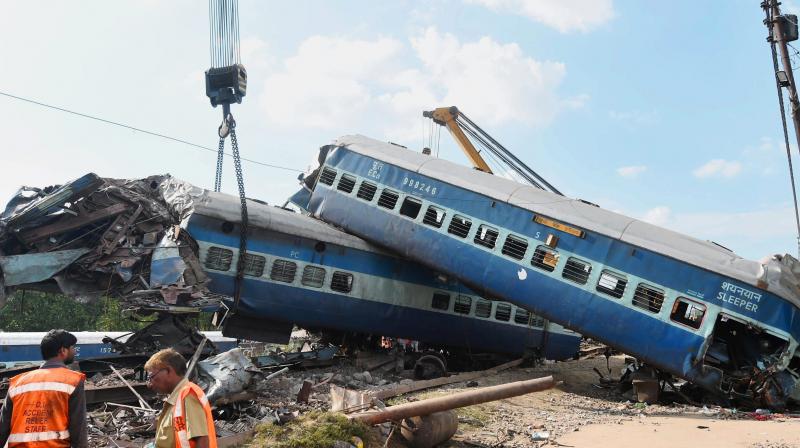Train safety: When will we get serious?

Investigators are still examining the cause of Saturday’s train derailment near Muzaffarnagar in UP, one of the deadliest in the year, with the initial evidence suggesting it was a clear case of human failure. Work on the track was going on when the superfast Utkal Express, running at around 100 kmph, derailed near Khatauli, with several coaches falling or telescoping into another, killing at least 24 people and injuring nearly 100 others. A train is expected to run at 10-15 kmph when repair work is on, but the driver was unaware of any speed restrictions. The work was dubbed “unofficial” and word hadn’t trickled down the railway communications network. Many who had entrusted their lives to the Indian Railways paid the penalty yet again for someone else’s carelessness. Safety is largely a nebulous concept in India. It finds a mention in Rail Budget speeches, with a huge amount of funds earmarked. But when it comes to the micro level, where safety depends on the health of each metre of rail track, there’s no accountability. Seven trains have gone off the tracks in eight months this year, including one in a suspected sabotage case in Madhya Pradesh. But more than terror plots, it’s lack of safety measures or human failure that led to most accidents. The frequency of the mishaps is a traumatic reminder of how we are failing to ensure rail safety despite technological advancements and funds allocated for safety that ran into Rs 1 lakh crore in this year’s Union Budget, into which the Rail Budget was subsumed.
Obsessed as we are with the speed of transport in the modern era, India is also looking at real high-speed trains to travel at around 350 kmph. The “Bullet Train” is a marvellous piece of engineering, but it relies on the soundness of the infrastructure, which is at least guaranteed as the technology is brand new and trains run on almost straight or well-cambered, dedicated lines. The question, however, is whether we need these speeds when we can’t provide basic safety in the infrastructure of rail lines and communications systems that are ageing. We also can’t get anti-crash measures and electronic monitoring of movement going in the networks. Unless the railway ministry gets cracking on giving safety the highest priority, there is no point in dreaming big about bullet trains speeding on the Chennai-Bengaluru and Pune-Ahmedabad via Mumbai lines on which feasibility studies are already apace and work is expected to start by the yearend. Railway accidents happen across the world, but India must rank high on the list when it comes to statistics of fatalities derived in per billion passenger-kilometre terms. Unless safety is made an absolute priority at the human and technological levels, Indian Railways can’t ensure passenger safety.

